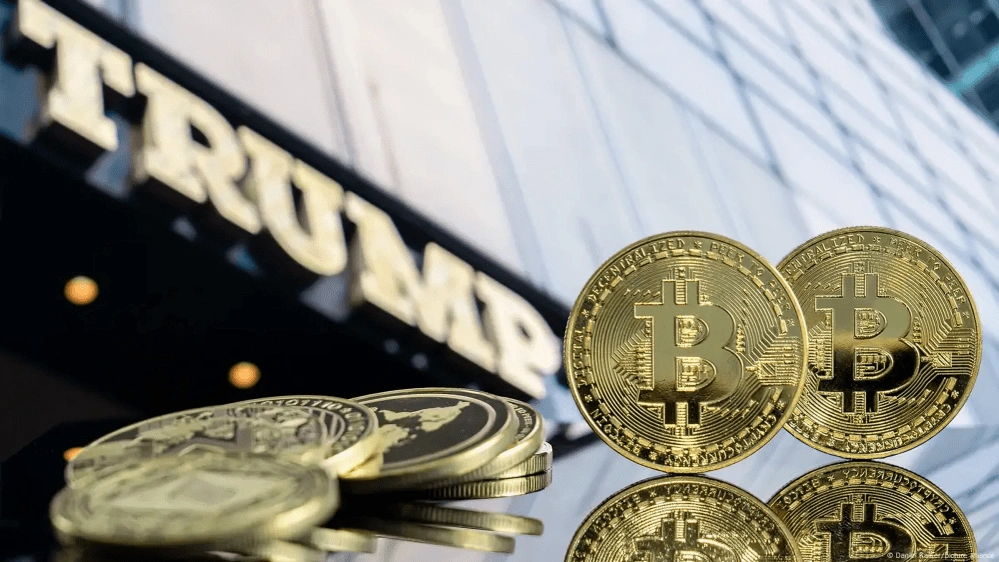BTC News


Bitcoin Reaches $80,000 as Trump Edges Closer to Congress Sweep
Latest News
US SEC Delays Decision on Polkadot and Hedera Spot ETFs
ECB Warns of Financial Contagion from U.S. Crypto Expansion
Learn
Geo-tagged NFT
Geo-tagged NFTs are blockchain-based digital assets tied to specific geographic locations, enabling unique location-based ownership and experiences.
Settlement Layer in Blockchain
The settlement layer in blockchain ensures secure transaction validation, finality, and record-keeping, serving as the foundational ledger for operations.
Bitcoin and Crypto Paper Wallet
A Bitcoin or crypto paper wallet is a printed document containing private keys and addresses, enabling secure offline asset storage.
Volatility in Cryptocurrency
Cryptocurrency volatility refers to rapid price fluctuations driven by market speculation, low liquidity, regulatory news, and evolving investor sentiment.
BTC News
Bitcoin (BTC) Feed

Here’s what happened in crypto today
Need to know what happened in crypto today? Here is the latest news on daily trends and events impacting Bitcoin price, blockchain, DeFi, NFTs, Web3 and crypto regulation.
Published: 44 minutes ago

Donald Trump Jr. invests in social media-turned BTC treasury firm
The Thumzup Media Corporation provides a platform for influencers to market various products on social media to earn revenue.
Published: 2 hours ago

US debt rises to $36.6T: Will recession signals send Bitcoin back to $95K?
Bitcoin price hit new highs today, but surging US debt and concerning housing data raise fears of a recession-led Bitcoin drop toward $95,000.
Published: 2 hours ago

Bitcoin soars to new all-time high above $112K as traders liquidate shorts
Bitcoin price roared to a new all-time high above $112,000. Cointelegraph explains why.
Published: 3 hours ago

Bitcoin rich list 2025: Who holds the most BTC this year?
From exchanges and ETFs to sovereign treasuries and crypto billionaires, Bitcoin’s ownership map in 2025 reveals a mix of concentration and quiet decentralization.
Published: 8 hours ago

Bitcoin analyst warns time 'running out' for another BTC price parabolic rally
Crypto analyst TradingShot says that while Bitcoin’s long-term outlook is still bullish, there might not be enough time for another leg up.
Published: 8 hours ago

Bitcoin to test $110K as macro analysis tells traders to 'buckle up'
Bitcoin price performance frustrates bulls as $110,000 stays out of reach, but the clock is ticking to even more risk-asset volatility.
Published: 8 hours ago

Japanese firm Remixpoint raises $215M to expand Bitcoin treasury holdings
Tokyo-listed energy and fintech firm Remixpoint has raised 31.5 billion Japanese yen ($215 million) to expand its Bitcoin treasury, aiming to accumulate 3,000 BTC.
Published: 9 hours ago

ChatGPT vs X: Which is better at first spotting the next big crypto narrative?
Crypto traders use ChatGPT and X to catch early signals, combining AI-driven analysis with real-time sentiment. But each comes with its risks.
Published: 10 hours ago

Musk’s America Party may support Bitcoin but still faces third-party pitfalls
Elon Musk says that his new America Party will support Bitcoin, but does it have a chance in the American political system?
Published: 10 hours ago

Emirates airline signs MoU with Crypto.com to enable crypto payments
Emirates and Crypto.com will work together to introduce crypto payments and launch promotional campaigns to boost adoption.
Published: 12 hours ago

5 countries where crypto is (surprisingly) tax-free in 2025
Looking to live tax-free with crypto in 2025? These five countries, including the Cayman Islands, UAE and Germany, still offer legal, zero-tax treatment for cryptocurrencies.
Published: 14 hours ago

Bitcoin gets ‘highly favorable’ cues as DXY sets 21-year weakness record
Bitcoin maintaining its inverse correlation to the US dollar means big wins on the horizon as the dollar strength DXY index trails below key moving averages.
Published: 14 hours ago

New Zealand bans crypto ATMs in crackdown on criminal cash conversions
New Zealand banned crypto ATMs and set a $5,000 cap on overseas cash transfers in a major step to combat money laundering and financial crime.
Published: 16 hours ago

Bitcoin lacks ‘sustained momentum’ for new high as traders are hesitant
Bitcoin traders are showing a “lack of follow-through strength” as BTC struggles to break its current all-time high level, says Bitfinex.
Published: 17 hours ago

Bitcoin lacked mass media coverage in Q2: Report
Major news outlets The Wall Street Journal, the Financial Times and The New York Times published just 13 articles on Bitcoin in Q2, according to research from Perception.
Published: 19 hours ago

Crypto traders ‘starting to salivate’ as Bitcoin inches back toward $110K
Santiment says the ratio of bullish to bearish Bitcoin comments on social media has hit a three-week high as traders grow more optimistic about Bitcoin breaking above $110,000.
Published: 20 hours ago

US sanctions North Korean tech worker crew over crypto thefts
TRM Labs said North Korea is moving away from hacks to focus more on deception-based revenue generation, such as planting IT workers in US companies.
Published: 20 hours ago

Bitcoin metric says $100K BTC was the bottom: When will a rally to new highs start?
Bitcoin’s inflow/outflow ratio fell to 2022 lows, and the cumulative volume delta shows short-selling pressure failing to push prices lower. Time for a rally?
Published: 24 hours ago

Bitcoin news update: BTC range tightening hints at price break to new highs
Bitcoin’s trading range tightens as bulls buy minor corrections while pushing BTC’s average daily trading price higher.
Published: 1 day ago

Japanese company moves to align CEO with Bitcoin strategy, full salary paid in BTC
The CEO, who was just appointed in June, is also listed among the management of Japan-based crypto exchange BITPoint.
Published: 1 day ago

Bitcoin price gained 72% and 84% the last two times BTC holders did this
Bitcoin's long-term investors now hold 80% of all BTC in circulation, which could trigger the next leg higher into price discovery if history repeats.
Published: 1 day ago

Ego Death Capital raises $100M to finance Bitcoin-focused startups
The venture fund has already invested in Bitcoin-focused exchanges, savings platforms and payment solutions.
Published: 1 day ago

Which countries secretly own the most Bitcoin — beyond the US and China
In 2025, governments hold over 463,000 BTC, with the US and China leading, while countries like Bhutan, Iran and the UK quietly build strategic reserves.
Published: 1 day ago

Truth Social files S-1 for ‘Crypto Blue Chip ETF,’ tracking top assets
Truth Social has filed to launch a crypto ETF tracking BTC, ETH, SOL, CRO and XRP, aiming to list on NYSE Arca after regulatory approval.
Published: 1 day ago

Bitcoin Mayer Multiple shows $108K BTC price undervalued: Analysis
Bitcoin is less overheated than during previous local bull market tops, but consensus is forming around an October blow-off top for BTC price action.
Published: 2 days ago

Metaplanet eyes digital bank acquisition in phase 2 of Bitcoin strategy
Metaplanet aims to leverage its growing Bitcoin treasury to acquire cash-generating businesses, with a digital bank in Japan among its possible targets.
Published: 2 days ago

Bitcoin miner BitFuFu mines 445 BTC for its biggest production month
Bitcoin miners had a mixed bag in June, with Australian-based miner IREN reporting a record-breaking month for revenues, but lower Bitcoin production.
Published: 2 days ago

BlackRock iShares Bitcoin ETF surpasses 700K Bitcoin
BlackRock’s iShares Bitcoin ETF now holds 55% of the total Bitcoin held across all US spot Bitcoin ETFs.
Published: 2 days ago

SEC acknowledges Trump’s Truth Social Bitcoin and Ethereum ETF
The acknowledgment officially starts the clock for the US securities regulator to decide on the proposed Bitcoin and Ether combined ETF.
Published: 2 days ago

Twitter User Claims TradingView Has Ignored a Fibonacci Retracement Bug for 5 Years
Popular chart analysis service TradingView contains a bug in the Fibonacci retracement technical analysis tool.
Published: 6 years ago



















